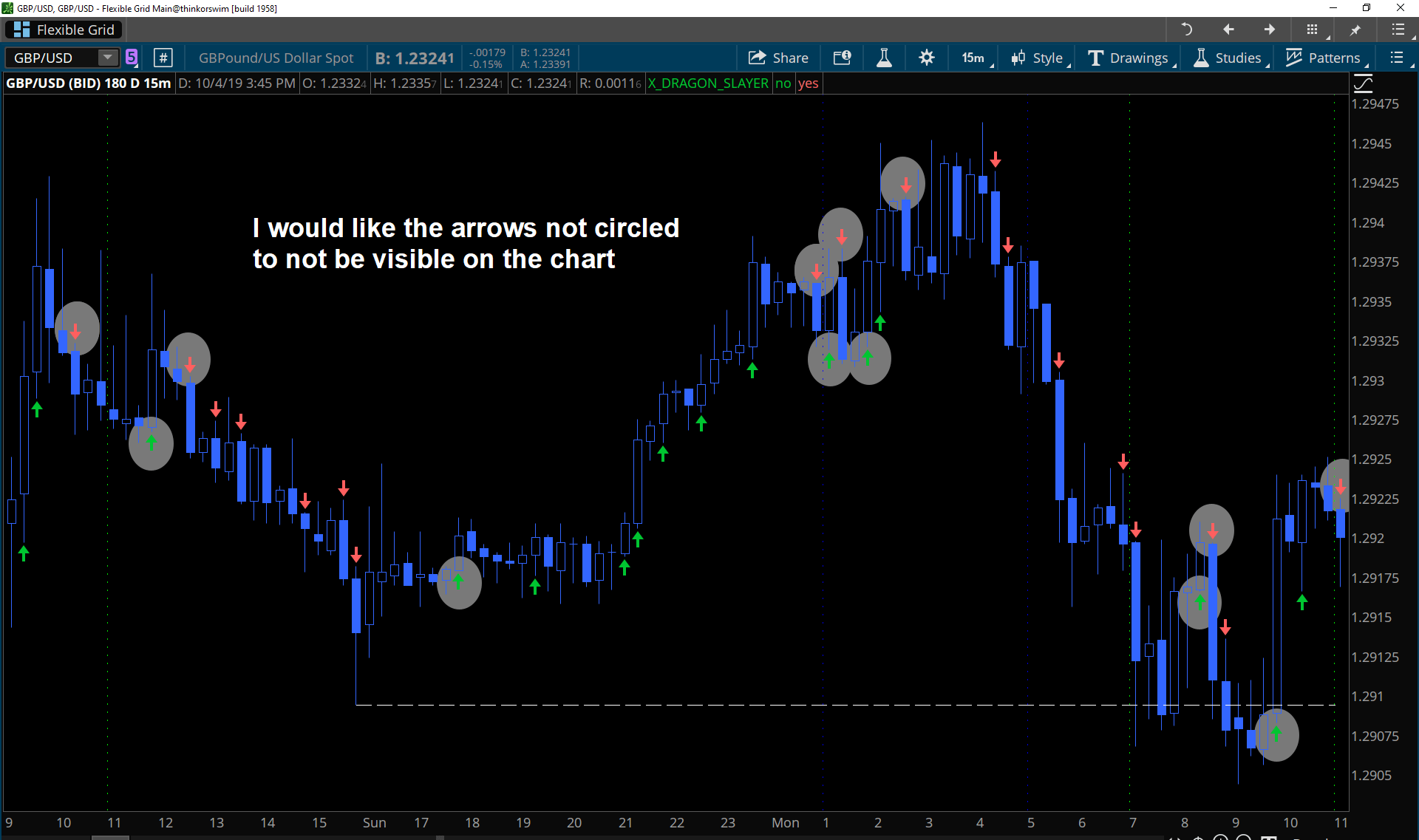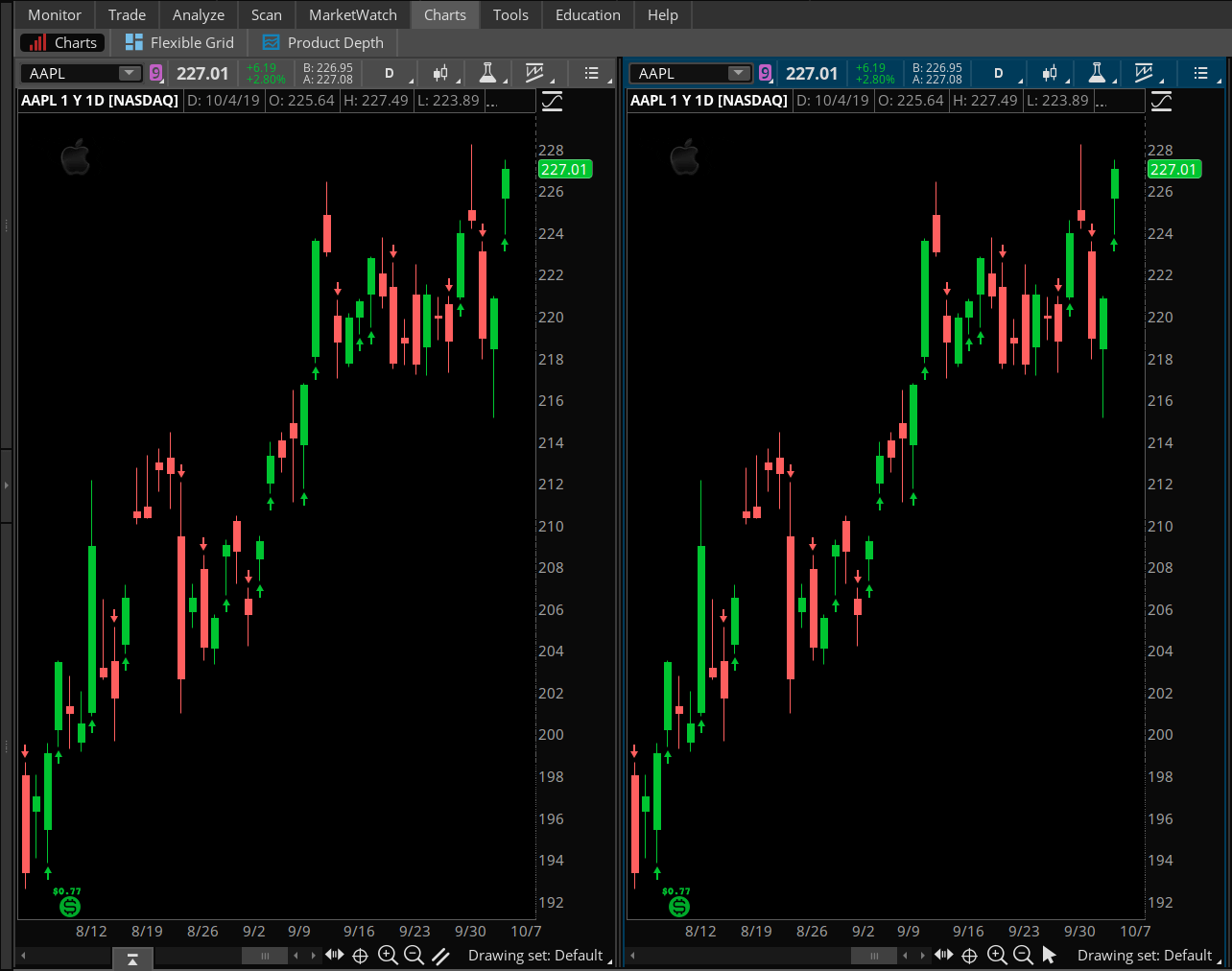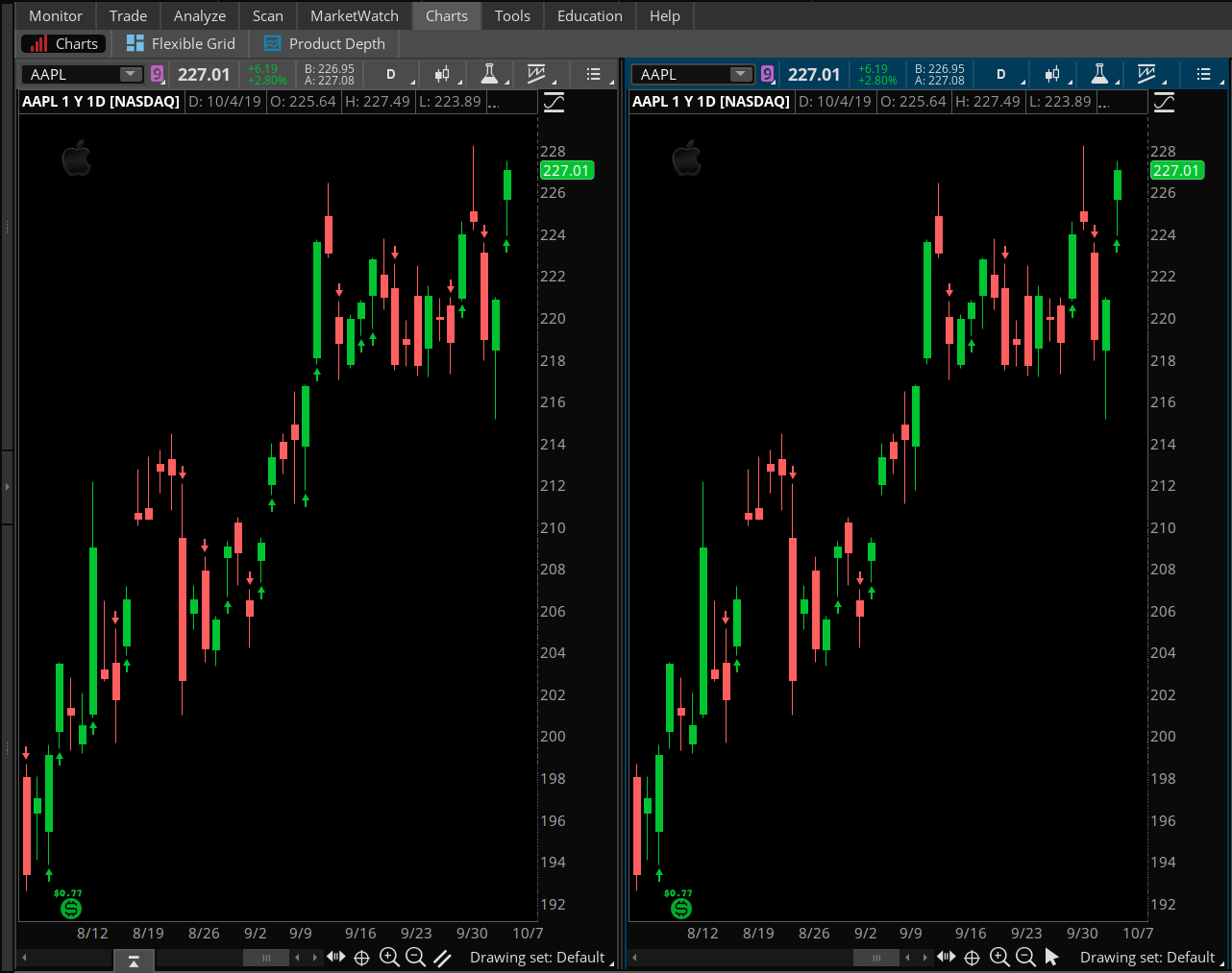| ♥ 0 |
Firstly, a huge thanks to Pete!!!. Without having any background in writing code, I’ve been writing my own custom, studies, watchlists, strategies, etc for a couple of years now thanks to the information on this site 🙂 I have a piece of code that has me stumped and I could really use some help. I’m not 100% sure if its even possible…. def IsUp = close > open; plot BUY = plot SELL = #Alert(BUY, “BUY”, Alert.BAR, Sound.DING);
I would like to only see one arrow plotted when there is a change in direction. Is this possible? The code plots a lot of arrows that I do not need and the additional arrows that I ignore are just cluttering up my charts. My OCD is driving me nuts 🙂 Please, any help would be greatly appreciated. Thanks is advance!
Marked as spam
|
Please log in to post questions.



